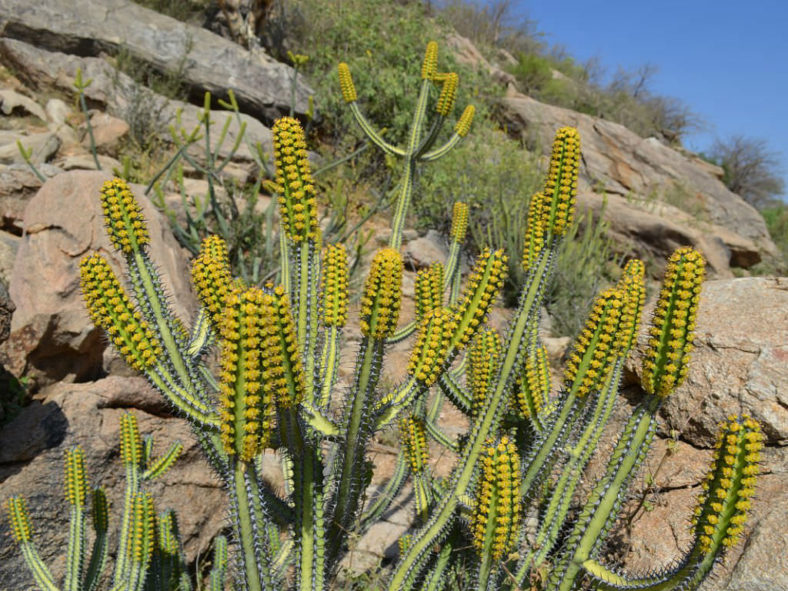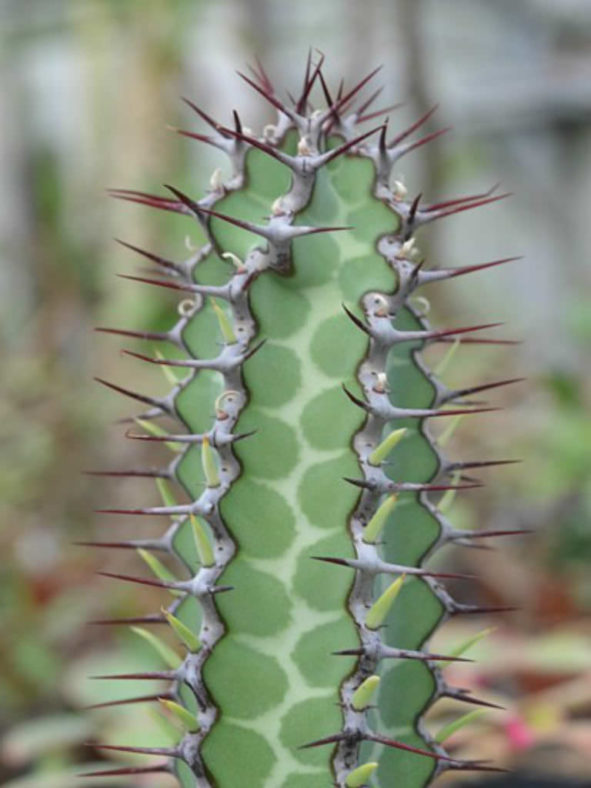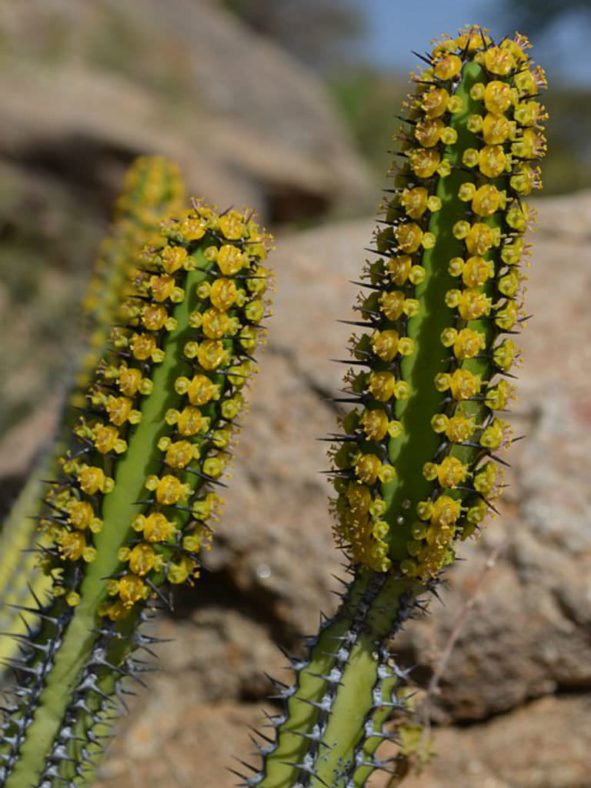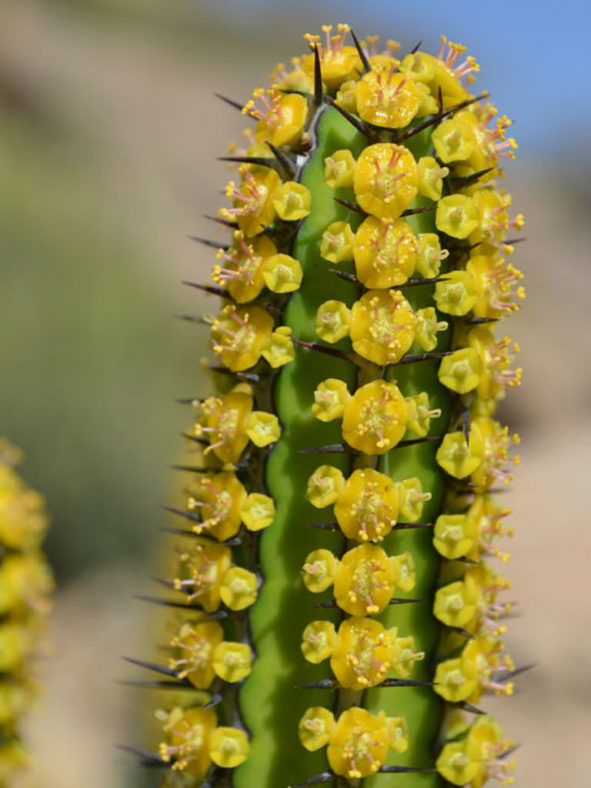Scientific Name
Euphorbia tescorum S.Carter
Scientific Classification
Family: Euphorbiaceae
Subfamily: Euphorbioideae
Tribe: Euphorbieae
Subtribe: Euphorbiinae
Genus: Euphorbia
Etymology
The specific epithet "tescorum" (pronounced "tes-KOH-rum") means "of the wilderness, of the wastelands, of the desert" and refers to the habitat of this species.
Origin
Euphorbia tescorum is native to northern Kenya and the adjacent areas in Uganda and Ethiopia. It grows in very open bushland, often on lava flows, at altitudes between 1,310 and 4,920 feet (400 and 1,500 m).
Description
Euphorbia tescorum is a sturdy succulent shrub with numerous branches spreading upwards from the base and sparsely re-branched above. It can reach a height of up to 6.6 feet (2 m). The branches are usually 5- to 6-angled, measuring up to 1.6 inches (4 cm) in thickness, and are more or less constricted at intervals of 4 to 12 inches (10 to 30 cm). They are usually green, variegated with darker markings around the teeth. The angles are typically distinctly toothed, with teeth up to 0.7 inches (1.8 cm) apart. The spine shields form a continuous horny margin along the angles. The spines are very strong, often variable in length, and can reach up to 0.6 inches (1.5 cm) long. The rudimentary leaves are deltoid and drop off soon after emerging.
The cyathia are golden yellow with cup-shaped involucres and orange-yellow, rarely reddish glands. They can reach a diameter of up to 0.2 inches (0.5 cm). The fruits are rosy red, obtusely 3-lobed capsules exserted on a reflexed pedicel that can measure up to 0.2 inches (0.5 cm) long. They contain gray ovoid seeds.

How to Grow and Care for Euphorbia tescorum
Hardiness: USDA hardiness zones 10a to 11b: from 30°F (-1.1°C) to 50°F (10°C).
Euphorbias are very easy to care for. These plants require minimal care to become established, but once established, they are self-sufficient. More die from overcare and watering than from neglect. Euphorbias require well-drained soil and ample sunlight. They are not particular about soil pH, but cannot tolerate wet soil. Unlike most succulents, Euphorbia does not tolerate prolonged drought well. It may need weekly watering during the summer. Water whenever the top few inches of soil are dry. Water them deeply, but avoid allowing them to remain in wet soil, as this can cause root rot. Add some organic matter or fertilizer to the planting hole. If you are growing them in containers or your soil is poor, feed them with a half-strength fertilizer once a month.
These succulents can be grown from seed, but germination can be challenging, and the seeds may be difficult to obtain. They are usually propagated by cuttings. This can be tricky because of the sap that exudes. Rooting hormone is recommended with Euphorbia. They tend to grow problem-free, but there are a few pests and diseases to be alert for.
Learn more at How to Grow and Care for Euphorbia.
Links
- Back to genus Euphorbia
- Succupedia: Browse succulents by Scientific Name, Common Name, Genus, Family, USDA Hardiness Zone, Origin, or cacti by Genus
Photo Gallery
Click on a photo to see a larger version.


